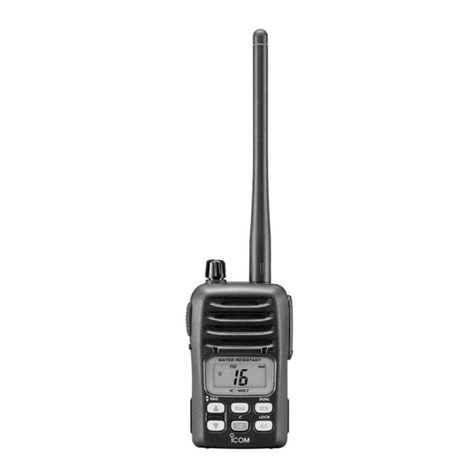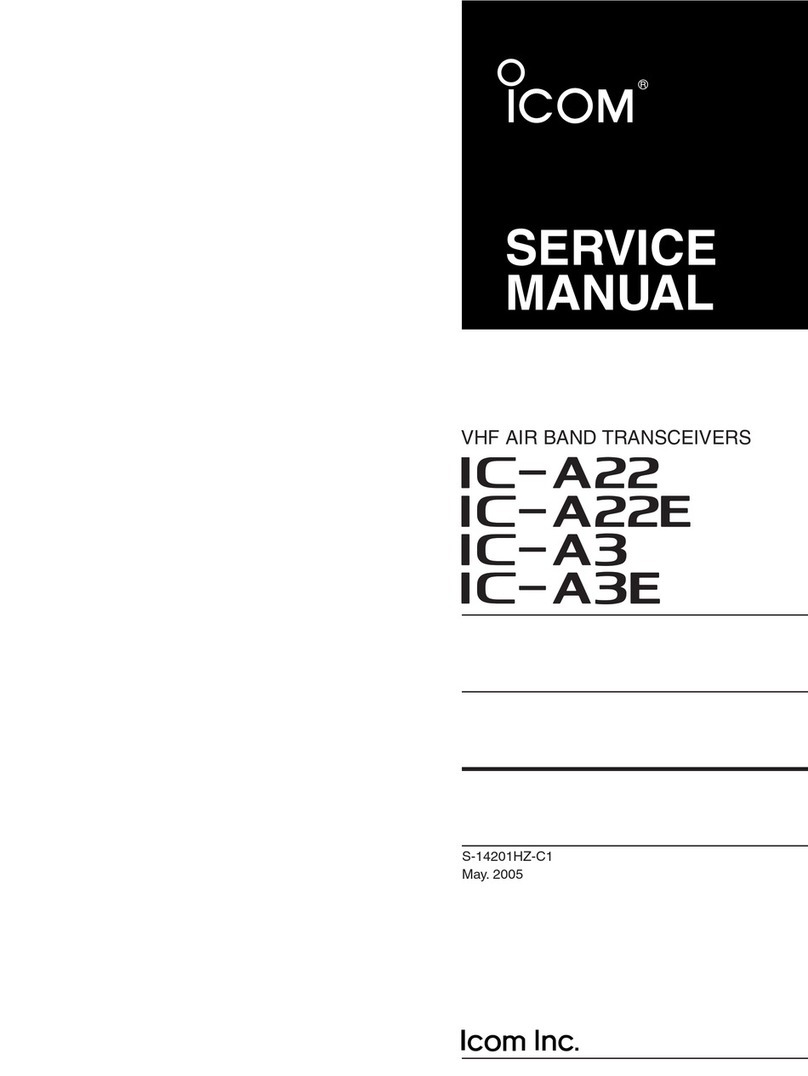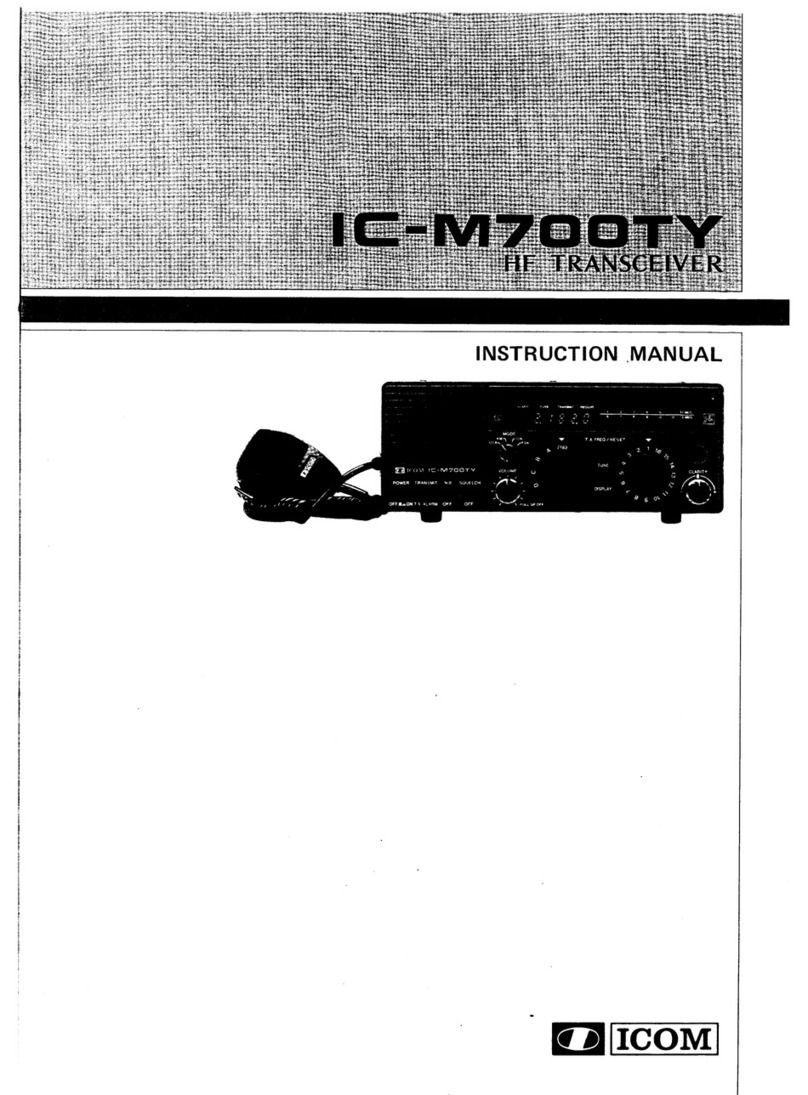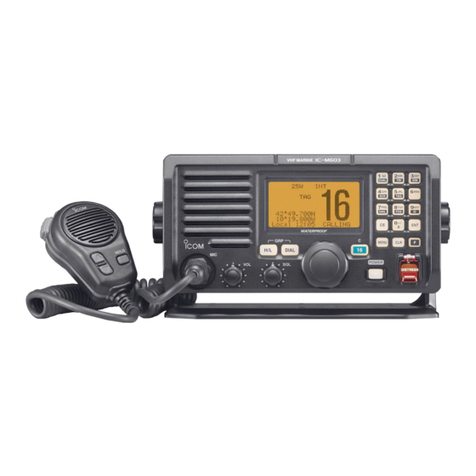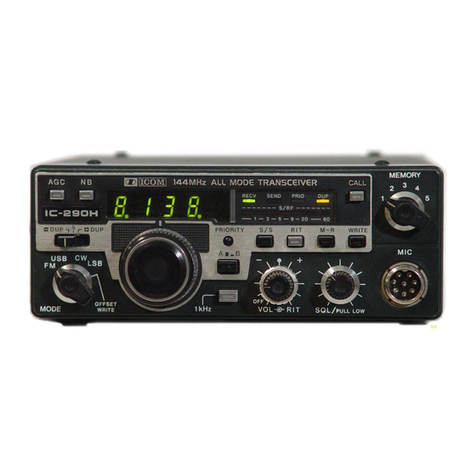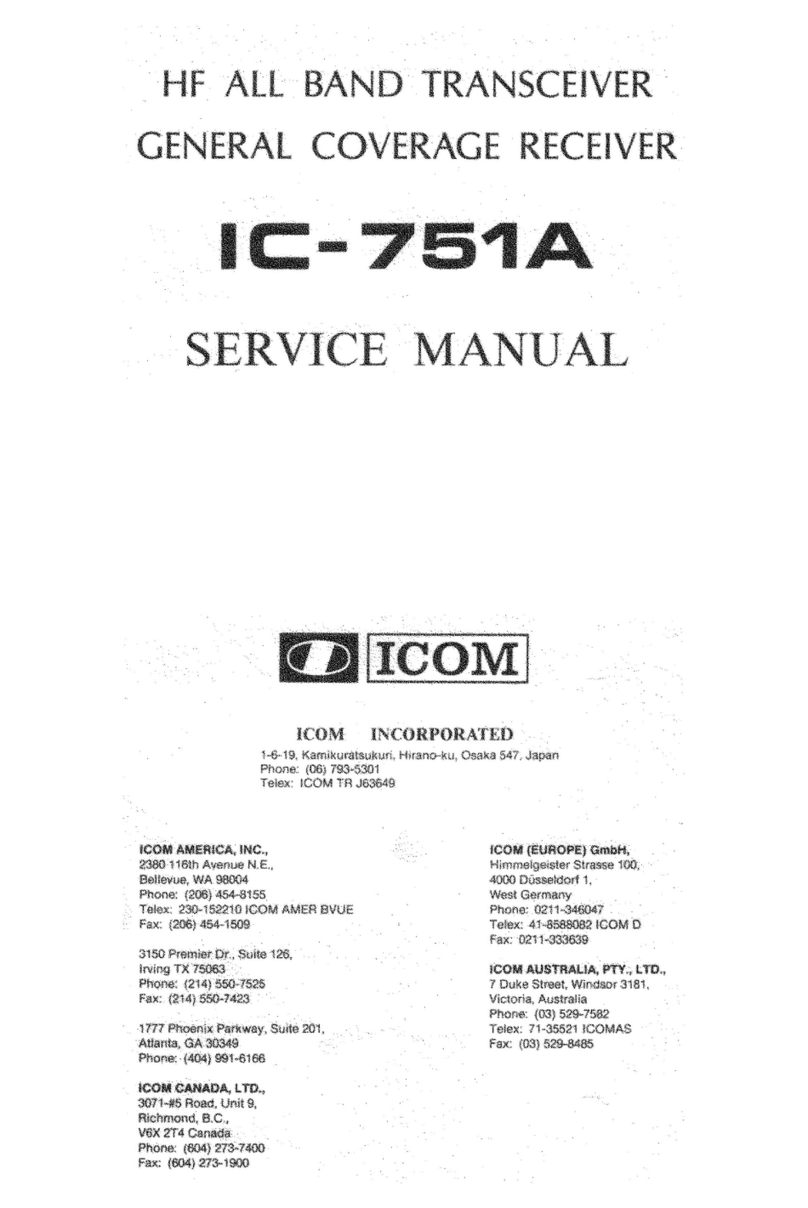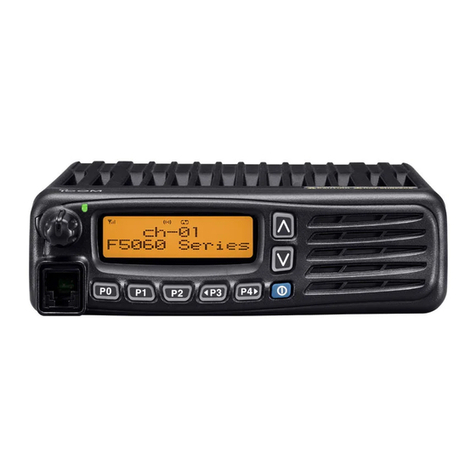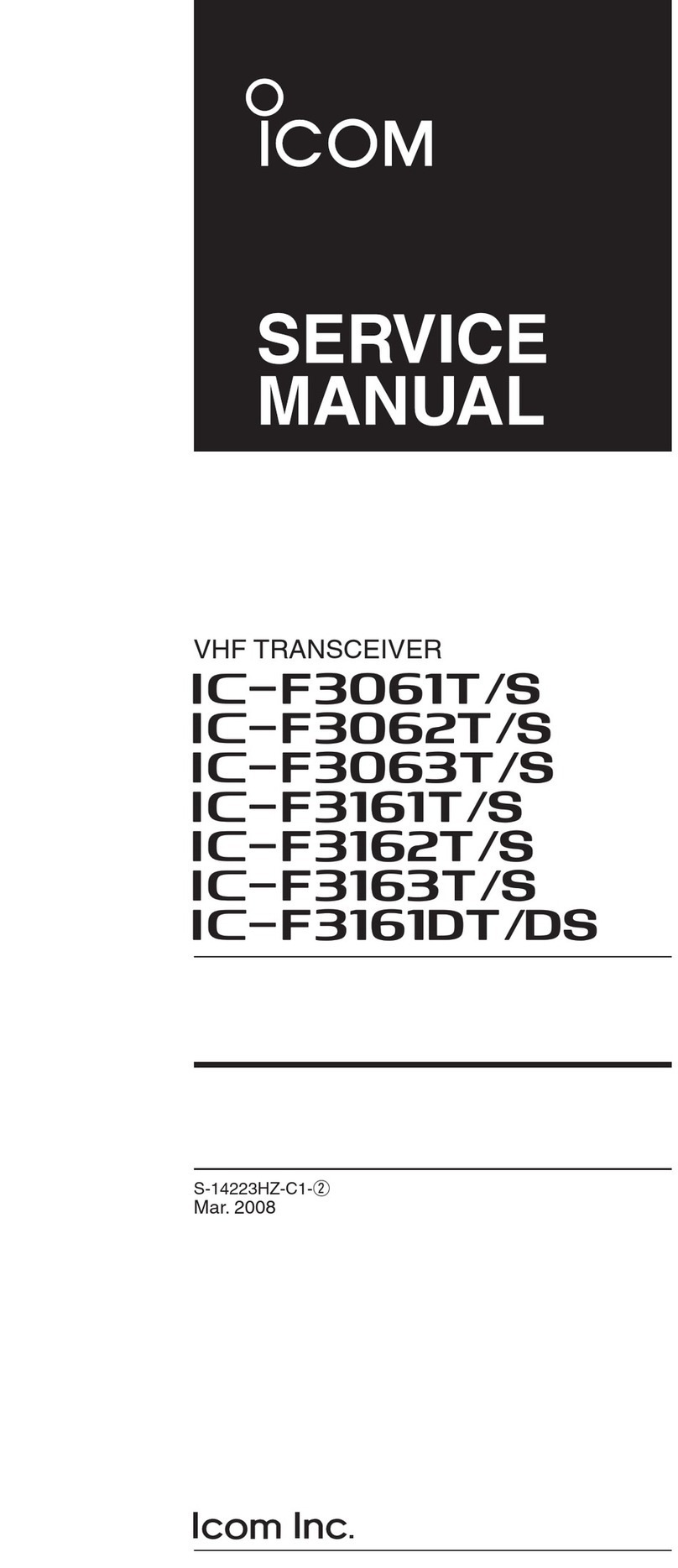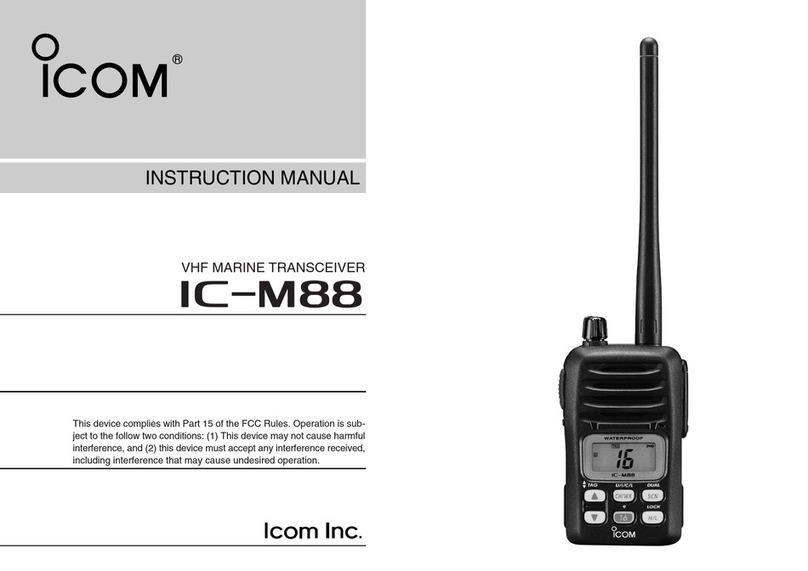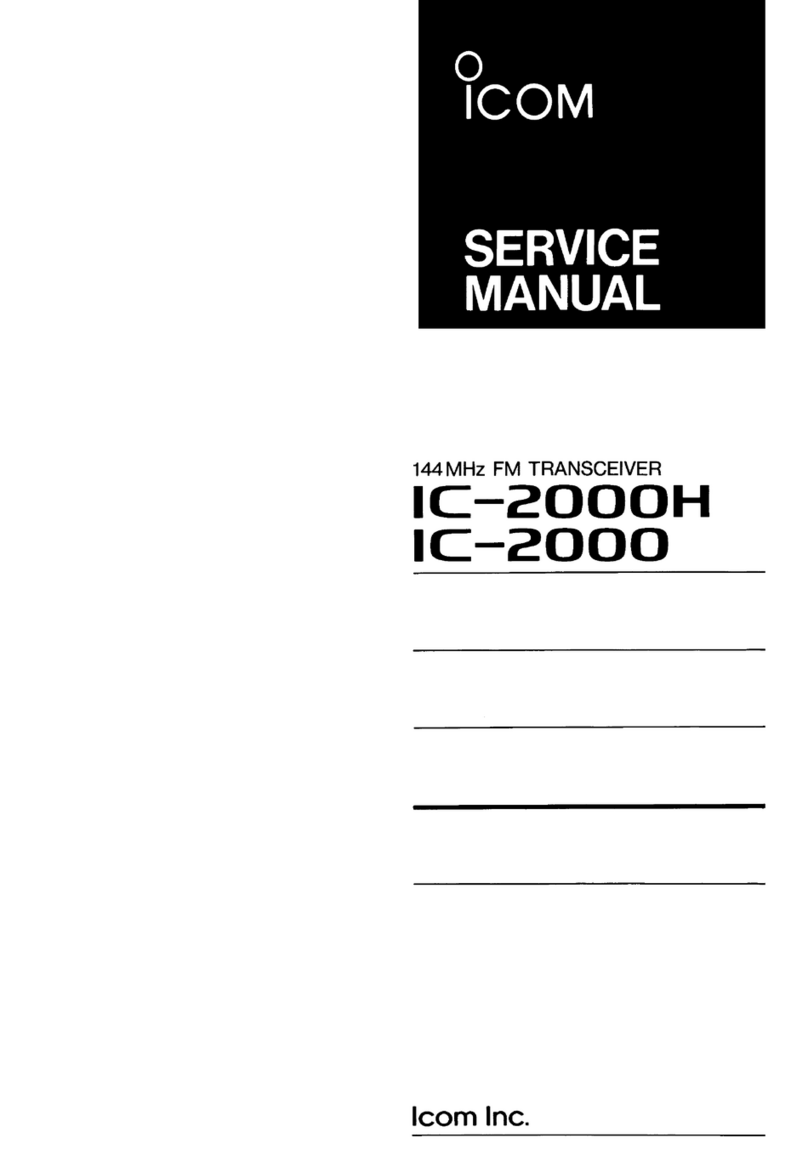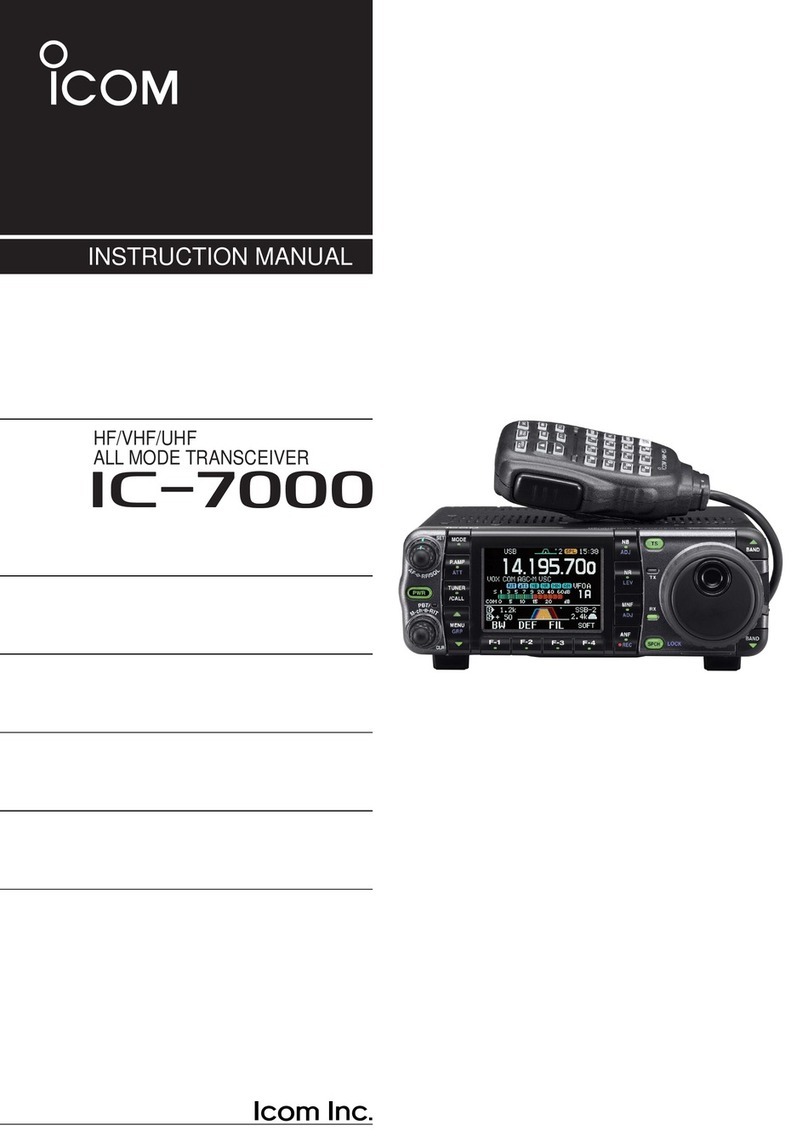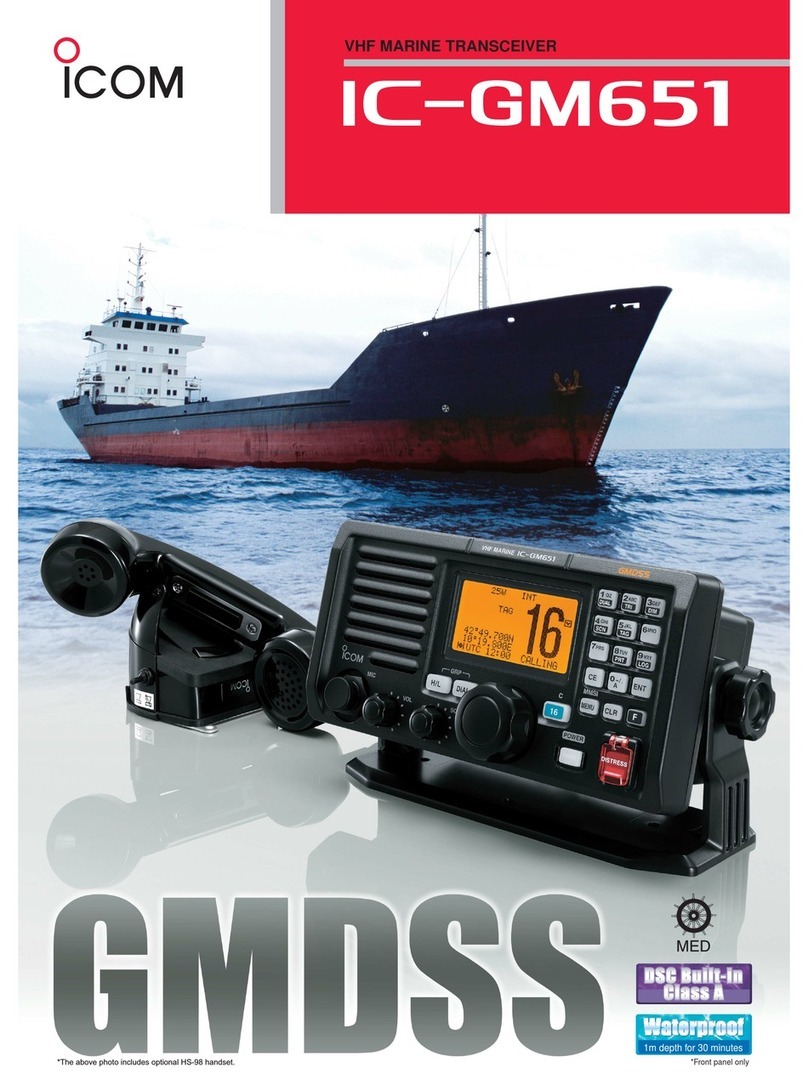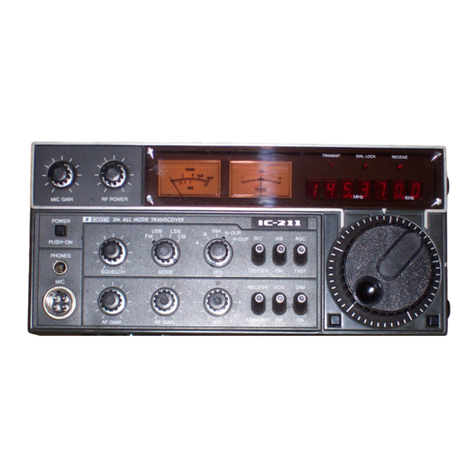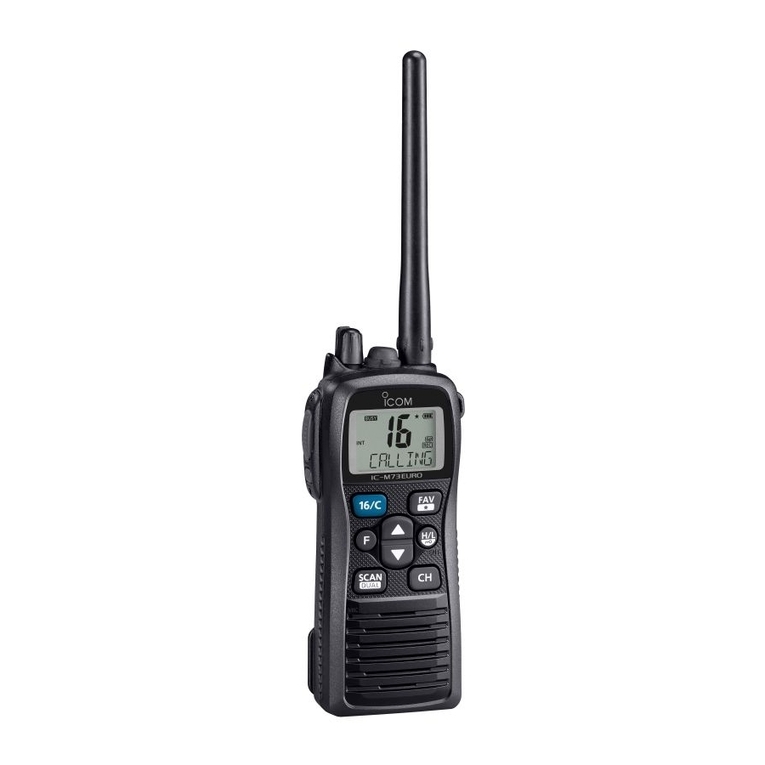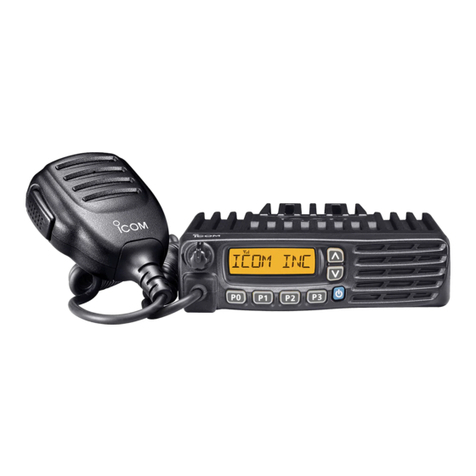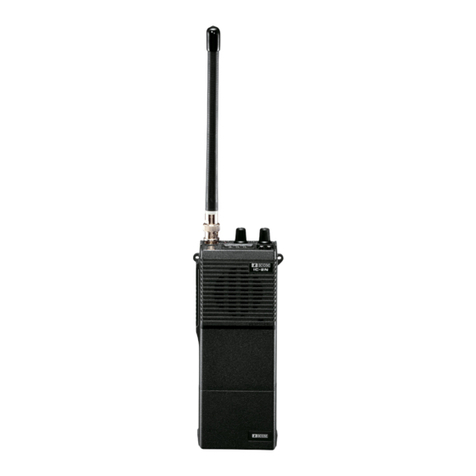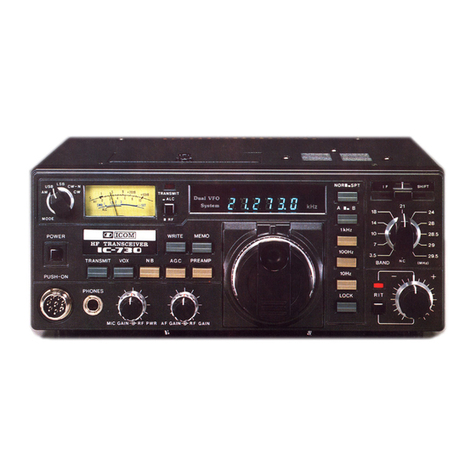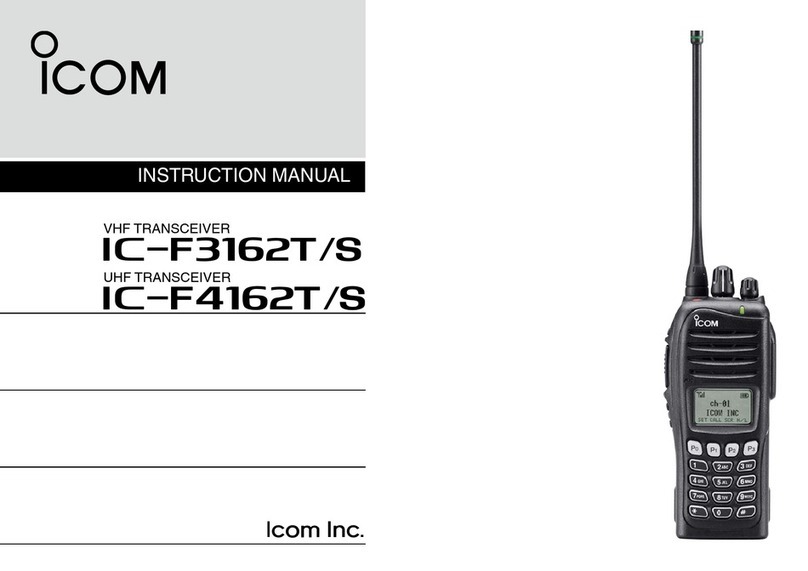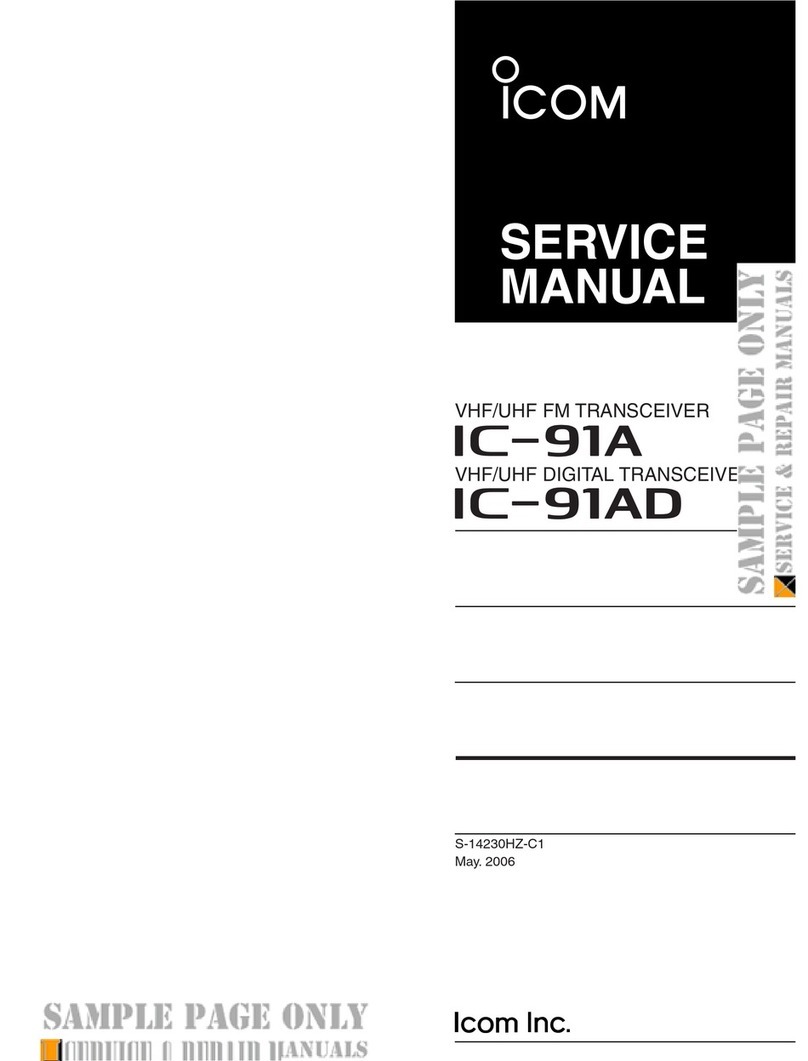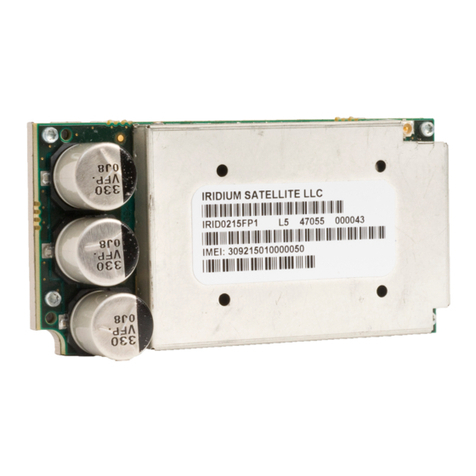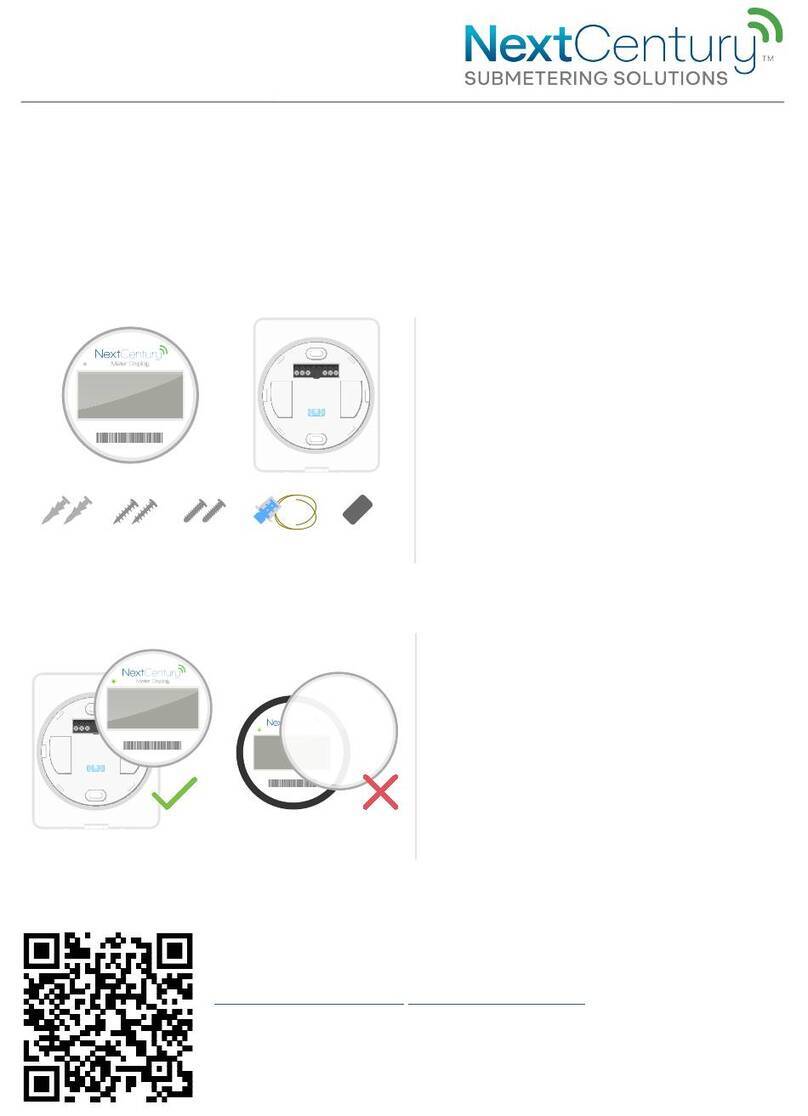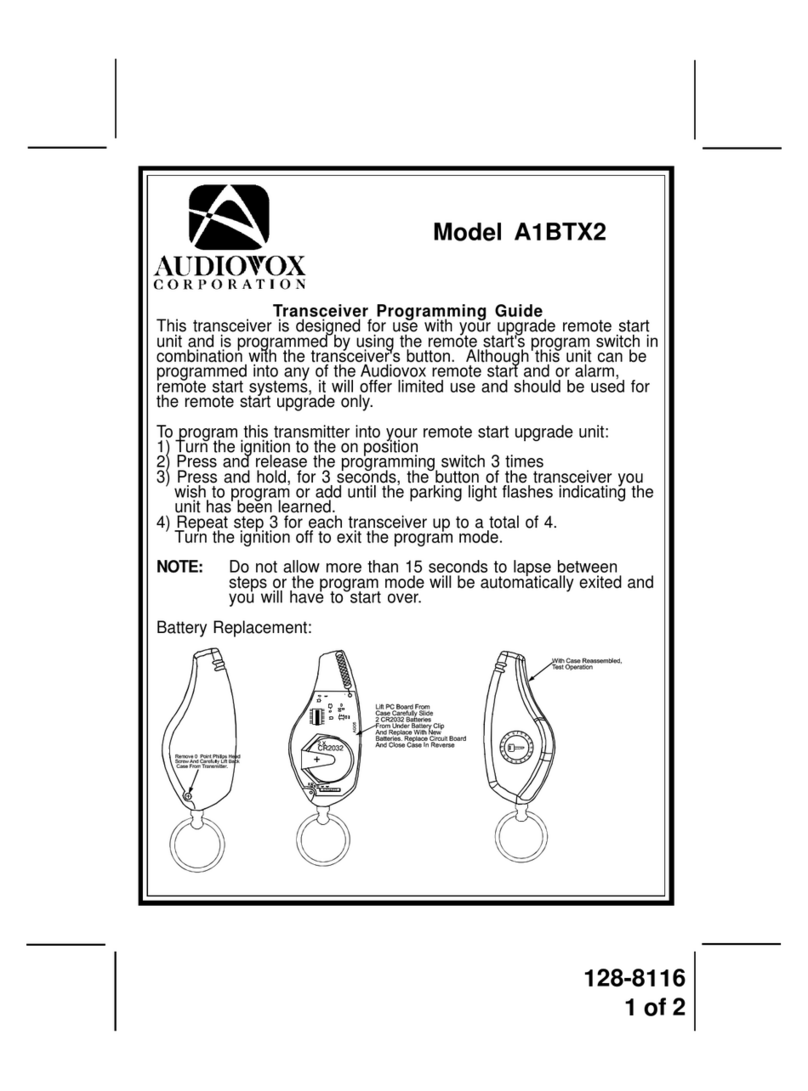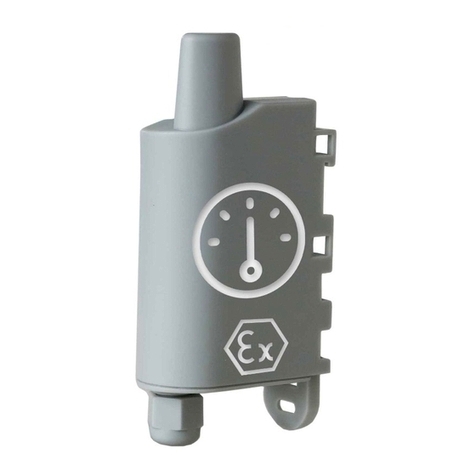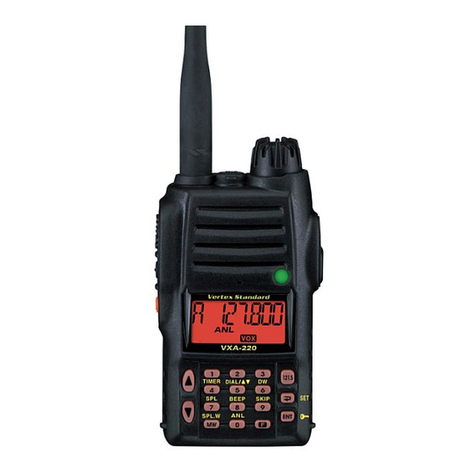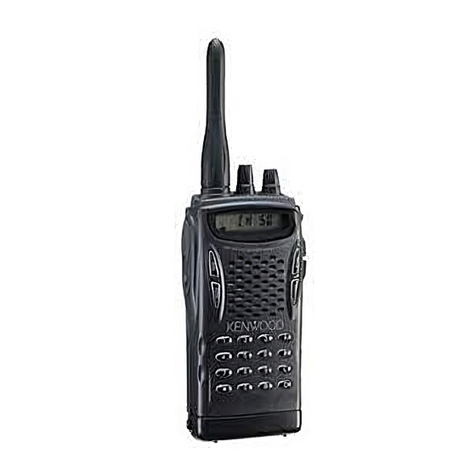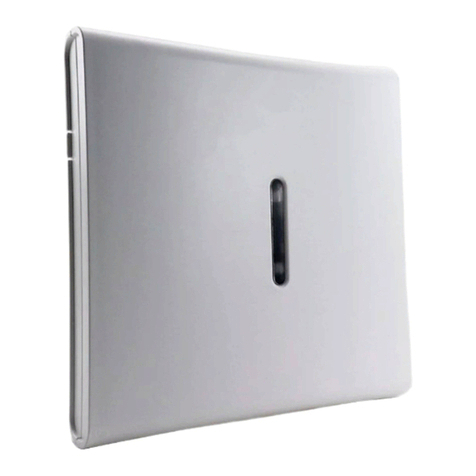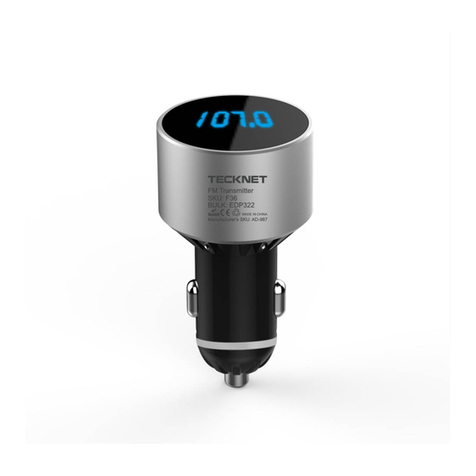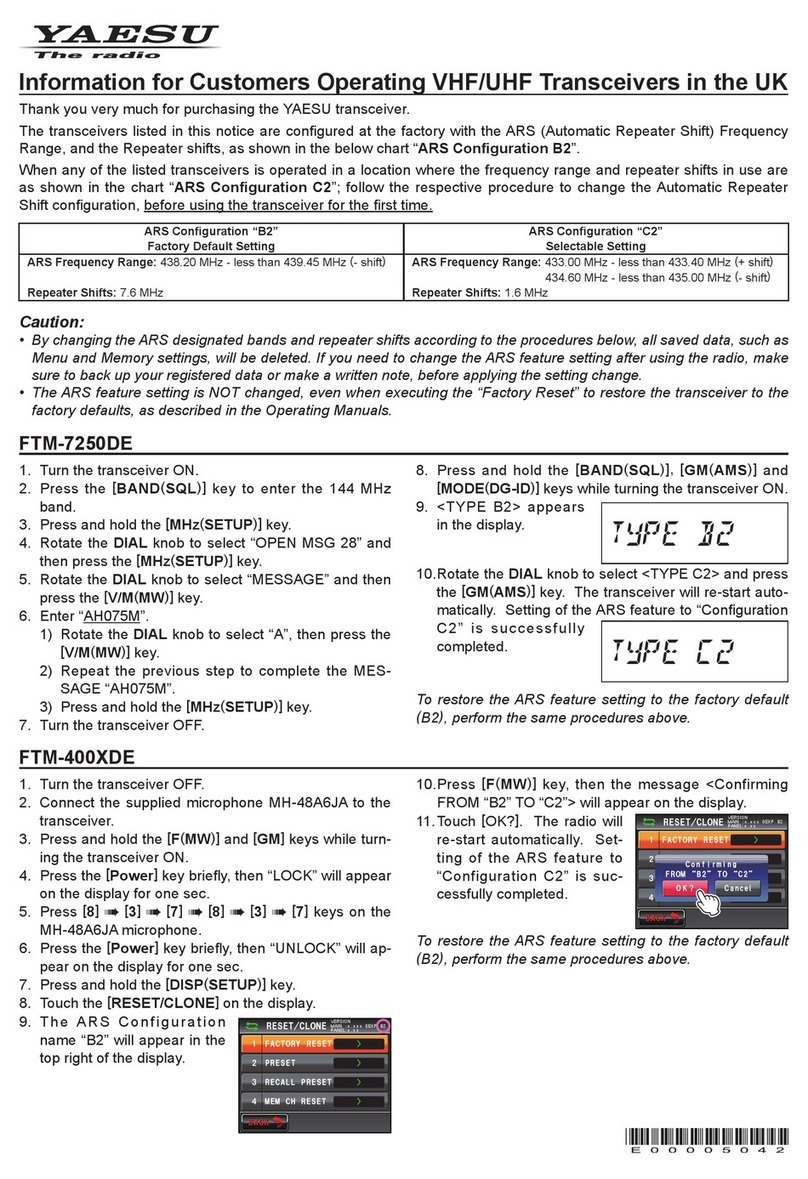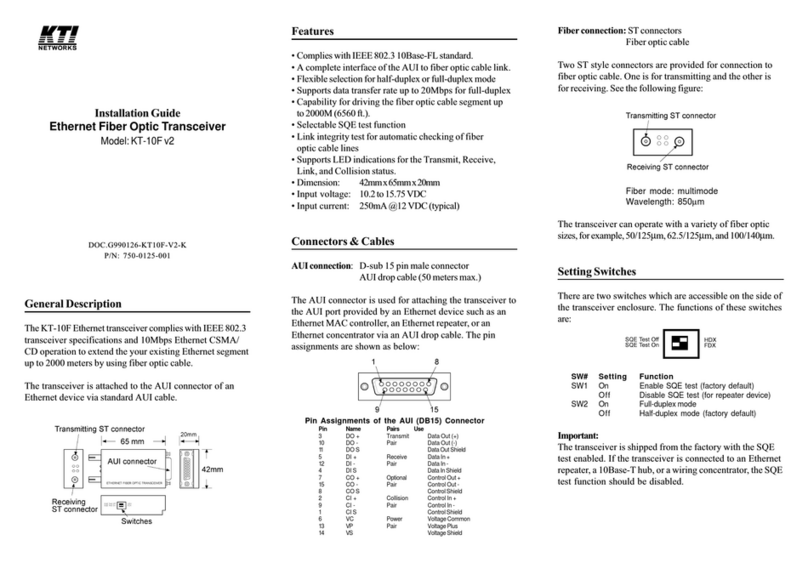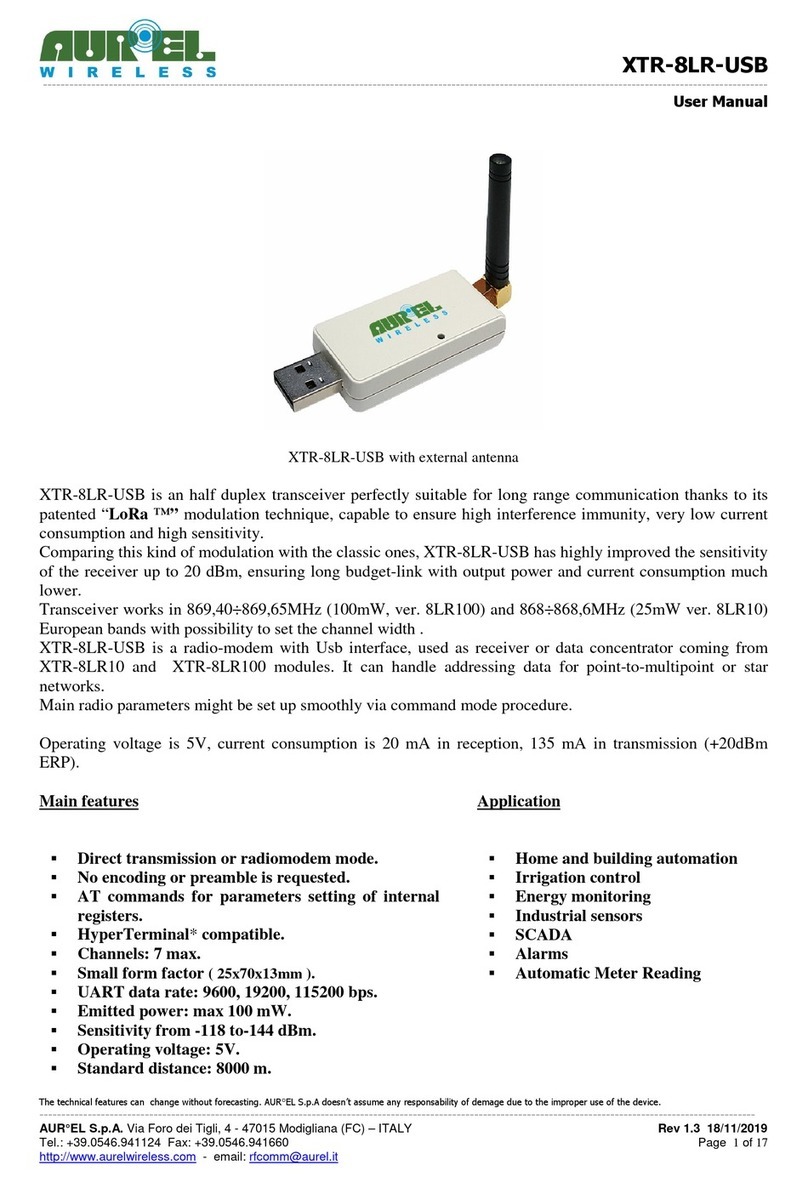Icom Ic-V88 User manual

Turning power OND
Before using the transceiver for the first time, the
battery must be fully charged for optimum life and
operation. See BATTERY CHARGING described in
INSTRUCTIONS q.
Rotate [VOL] to turn ON the power.
[UP]
[PTT]
[DOWN]
[VOL]
[ROTARY
SELECTOR]
Function
Display
(LCD)
Receiving and TransmittingD
CAUTION:
Attach an antenna before transmitting.
Transmitting without an antenna may damage the
transceiver.
Receiving:
Rotateq[ROTARY SELECTOR] to select a channel.
When receiving a call, rotatew[VOL] to adjust the au-
dio output level to a comfortable listening level.
Transmitting:
Wait until the channel is clear to avoid interference.
While holding downq[PTT], speak at a normal voice
level.
Releasew[PTT] to receive.
IMPORTANT:
To maximize the readability of your signal:
1. After pushing [PTT], pause briefly before you
start speaking.
2. Hold the microphone 5 to 10 cm (2 to 4 inches)
from your mouth, then speak at a normal voice
level.
BASIC OPERATION
INSTRUCTIONS w
VHF TRANSCEIVER
I ç- U 8 8
UHF TRANSCEIVER
I ç-V 8 8
Thank you for choosing the IC-V88 v h f t r a n s c e i v e r
or IC-U88 u h f t r a n s c e i v e r .
READ ALL INSTRUCTIONS carefully and com-
pletely before using the transceiver.
1-1-32 Kamiminami, Hirano-ku, Osaka 547-0003, Japan A-7140H-2EX Printed in Japan
© 2014 Icom Inc.
BATTERY PACKSD
BP-278/BP-279• b a t t e r y p a c k
Battery pack Voltage Capacity Battery life*
BP-278
7.2 V
1130 mAh
(minimum)
1190 mAh
(typical)
10 hours
BP-279
1485 mAh
(minimum)
1570 mAh
(typical)
14 hours
* When the power save function is turned ON, and the op-
erating periods are calculated under the following condi-
tions:
TX:RX:standby = 5:5:90
CHARGERSD
BC-213• d e s k t o p c h a r g e r + BC-123S a c a d a p t e r
To rapid charge a battery pack.
BC-214• m u l t i c h a r g e r + BC-157S a c a d a p t e r
To rapid simultaneously charge up to 6 battery packs.
DC CABLESD
CP-23L• c i g a r e t t e l i g h t e r c a b l e
Use when charging the battery pack from a 12 V cig-
arette lighter socket. (Use with the BC-213)
OPC-656• d c p o w e r c a b l e
Use with a 13.8 V power source instead of a power
adapter. (Use with the BC-214
)
ANTENNASD
FA-SC25V/FA-SC55V/•
FA-SC62V/FA-SC63V v h f a n t e n n a s
FA-SC25V: 136–150 MHz
FA-SC55V: 150–174 MHz
FA-SC62V: 150–160 MHz
FA-SC63V: 155–165 MHz
FA-SC56VS/FA-SC57VS• v h f s t u b b y a n t e n n a s
FA-SC56VS: 150–162 MHz
FA-SC57VS: 160–174 MHz
FA-SC61VC• v h f c u t a n t e n n a
FA-SC61VC: 136–174 MHz
FA-SC01U/FA-SC02U• u h f a n t e n n a s
FA-SC01U: 350–400 MHz
FA-SC02U: 330–380 MHz
FA-SC61UC• u h f c u t a n t e n n a
FA-SC61UC: 380–520 MHz
OTHERSD
MB-130• m o b i l e b r a c k e t
Mounts the BC-213 d e s k t o p c h a r g e r in a variety of
places in your vehicle.
MB-133• b e l t c l i p
HM-158LA/HM-159LA/HM-168LWP•
s p e a k e r m i c r o p h o n e
Combination speaker-microphone that provides
convenient operation while the transceiver is hanging
on your belt.
HM-153LA/HM-166LA• e a r p h o n e -m i c r o p h o n e
Ideal for hands-free operation. Clip the HM-153LA or
HM-166LA (with integrated ptt s w i t c h ) to your lapel
or breast pocket.
HS-94/HS-95/HS-97• h e a d s e t
+ VS-4LA p t t s w i t c h c a b l e
HS-94: Ear-hook type
HS-95: Neck-arm type
HS-97: Throat microphone
VS-4LA: To connect to headsets
Some options may not be available in some countries.
Ask your dealer for details.
Approved Icom optional equipment is designed
for optimal performance when used with an Icom
transceiver. Icom is not responsible for the destruction
or damage to an Icom transceiver in the event the
Icom transceiver is used with equipment that is not
manufactured or approved by Icom.
OPTIONS
Icom, Icom Inc. and the Icom logo are registered trademarks of Icom Incor-
porated (Japan) in Japan, the United States, the United Kingdom, Germa-
ny, France, Spain, Russia and/or other countries.
All other products or brands are registered trademarks or trademarks of
their respective holders.
The following settings can be changed in the Front
Panel Programming mode without a PC. This is a con-
venient function to immediately change some settings
when you operate the transceiver in the field.
RX and TX frequencies•
RX and TX CTCSS tone frequencies•
RX and TX DTCS codes•
Channel name•
NOTE:
•While you are in the Front Panel Programming
mode, you cannot receive or transmit.
•To exit the Front Panel Programming mode, turn
OFF the transceiver, and then turn it ON again.
See the back page for details.
ABOUT THE FRONT PANEL PROGRAMMING

FRONT PANEL PROGRAMMING
Entering the Front Panel Programming modeD
(Step 1)
Rotateq[VOL] to turn OFF the transceiver.
While pushingw[P0] and [UP] at the same time, turn
ON the transceiver.
“SET MODE” is displayed.•
Pushe[P0] to enter the Front Panel Programming
mode.
A zone number and a channel number are displayed.•
To Exit the Front Panel Programming mode and re-
turn to normal operation:
Turn OFF the transceiver, and then turn it ON➥
again.
Selecting a channel to program (Step 2)D
Pushq[P3] to enter the Channel Selection mode.
The channel number blinks.•
Pushw[P1] to select a zone.
Pushe[UP] or [DOWN] to select a channel you want
to program.
Pushr[P3] again to set the channel.
The cursor stops blinking.•
Editing the RX and TX frequencies (Step 3)D
Pushq[UP] to first select the RX frequency, or push
again to select the TX frequency.
•
The LED indicator lights green when you select the RX fre-
quency, and lights red when you select the TX frequency.
Pushw[P3] to enter the Frequency Edit mode.
The cursor blinks at the first digit.•
Enter a desired frequency by pushing the keys one
the 10-key pad.
After you finish entering all digits, the frequency willr
automatically be saved.
The cursor stops blinking.•
Selecting the RX and TX tones (Step 4)D
Pushq[UP] to first select the RX tones or push again
to select the TX tones.
The LED indicator lights green when you select the RX•
tones, and lights red when you select the TX tones.
Pushw[P2] to select the CTCSS OFF, CTCSS tone
frequency, or DTCS code screen.
Pushe[P3] to enter the CTCSS Tone Frequency or
DTCS Code Selection mode.
The frequency or the first digit code blinks.•
Setting the CTCSS tone frequency:
Pushr[UP] or [DOWN] to select the frequency.
Pusht[P3] again to set the frequency.
The frequency stops blinking.•
Setting the DTCS code:
Pushr[UP] or [DOWN] to select the code.
Pusht[P3] to move the cursor to the next digit.
Repeat stepsy r and tuntil you finish selecting the
code.
Pushu[P1] to toggle the DTCS code's polarity while
the cursor is blinking.
You can select Normal or Inverse polarity.•
Normal lnverse
Pushi[P3] again to save the code.
The cursor stops blinking.•
Editing the channel name (Step 5)D
You can display the name instead of the channel number.
Pushq[UP] to display the channel name.
•
If no channel name is programmed, nothing is displayed.
Pushw[P3] to enter the Channel Name Edit mode.
The cursor blinks at the first digit.•
Enter a character by pushinge[UP] or [DOWN], or
the keys on the 10-key pad.
When using the 10-key pad:
Repeatedly pushing➥[2], for example, first selects
the number “2.” Continuing to push it selects capital
letters “A,” then “B,” then “C,” and then selects lower
case letters “a,” then “b,” then “c.”
To enter a space, push• [1] twice. The cursor blinks, and
then push [P3] to move to the next digit.
•[0] and [1] also select other symbols.
•[✱]and [#] are used to move the cursor to the left or to
the right.
Pushr[P3] to move the cursor to the next digit.
t
Repeat steps eand runtil you finish entering the
name.
Pushy[P3] again to save the channel name.
The cursor stops blinking.•
Other settings (Step 6)D
To deactivate or activate the channel:
Select a desired zone and the channel to deactivate➥
and then push [P2].
“• ” is displayed.
The channel cannot be used until you re-activate it.•
To activate the channel, push➥[P2].
To toggle between Wide and Narrow channel pass-
band width:
Select a RX frequency, and then push➥[P1]. (You
cannot toggle if the cursor is blinking.)
“WIDE” or “NARROW” is briefly displayed.•
To clear the RX frequency memory:
Select a RX frequency, and then push➥[P2]. (You
cannot clear the RX frequency memory if the cursor
is blinking.)
The channel will be cleared and you have to set the RX•
frequency again to use the channel.
To Inhibit or allow transmission:
Select a TX frequency, and then push➥[P2]. (You
cannot inhibit transmission if the cursor is blinking.)
“TX INH” is displayed.•
To allow transmission, push➥[P2].
[P3]
[P2] [P1] [P2] [P2] [P2]
*1
[P0] [DOWN] [DOWN]
[UP]
[P2]
[UP]
[DOWN]
[UP]
[DOWN]
[UP] [UP]
[P3] [P3] [P3]
[P2]
[P2]
[P2] [P2]
[P3] [P2] [P3]
[P3] [P3]
*3
*3 *3
*2
*2
*2
*2
*2 *2
[DOWN]
[UP]
• Channel Selection
mode (Step 2) • Frequency Edit
mode (Step 3)
• Frequency Edit
mode (Step 3)
• Deactivating or activating
channel (Step 6)
• Clearing the RX frequency
memory (Step 6) • Inhibiting or allowing
transmission (Step 6)
• Channel Name Edit
mode (Step 5)
• Zone and Channel • RX frequency • TX frequency
• DTCS Code Selection mode
(Step 4)
• CTCSS To ne Frequency
Selection mode (Step 4)
• CTCSS To ne Frequency
Selection mode (Step 4)
• DTCS Code Selection mode
(Step 4)
• RX CTCSS tone frequency OFF screen • TX CTCSS tone frequency OFF screen • Channel name
• RX CTCSS tone frequency screen • TX CTCSS tone frequency screen
• RX DTCS code screen • TX DTCS code screen
Entering the Front Panel Programming mode (Step 1)
• Toggling the channel passband width
NOTE:
*1: Once you clear the RX frequency
memory, you have to set the RX fre-
quency again to use the channel.
*2: Settable in the same way for both
RX and TX.
*3: The CTCSS OFF, a CTCSS tone
frequency or a DTCS code screen is
displayed.
Programming outlineD
Other manuals for Ic-V88
3
This manual suits for next models
1
Other Icom Transceiver manuals
